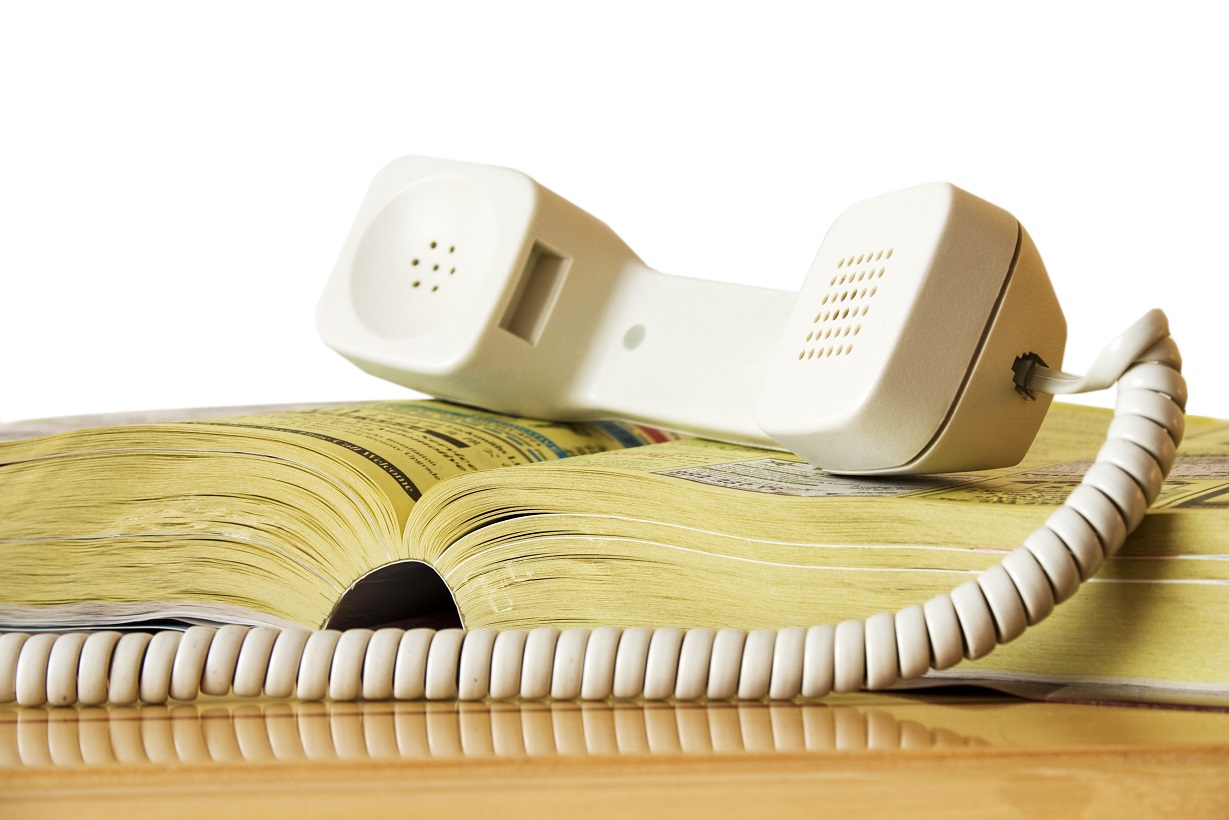Everyone knows the Yellow Pages. After all, it’s not that long since huge printed yellow tomes featuring the details of millions of UK businesses were delivered through our doors.
But you’ve probably noticed that the Yellow Pages doesn’t turn up on your doorstep anymore. So, where did it go? And how are local businesses advertising themselves these days without it?
From the very first Yellow Pages to the final printed directory
The first Yellow Pages edition was published in Brighton, UK back in 1966.
In 2017, the Yellow Pages’ owner Yell announced that its printed form would cease production, with the final delivery being made in January 2018, marking its last print run of 104 editions.
So now, local business listings via Yellow Pages have moved online to Yell.com . The switch to digital demands constant change as Internet search engines replaced the old-fashioned telephone directory.
Advertising local businesses went fully digital through Yell
The telephone directory printed on yellow paper was a household staple for more than 50 years.
Some people of a certain age will look back fondly on the Yellow Pages advertising of its heyday. Known for its successful TV ads, including JR Hartley’s ‘Fly Fishing’, the Yellow Pages managed to cement itself as something we all needed and it was a genuine household name.
How many brands can say something like that these days?
Why did the printed Yellow Pages end?
When owner-company Yell announced the final editions in 2017, its CEO was quoted by the BBC in an article: “Like many businesses, Yell has found that succeeding in the digital space demands constant change and innovation.
“We’re well placed to continue to help local businesses and consumers be successful online, both now and in the future.”
For consumers who’ve been vocally worried about environmental concerns, this switch from print to digital must have been welcome news.
Access to information is pretty much entirely online these days. Every time we want to do some research or find out about service providers before spending money, where do we go? To our favourite search engine, of course.
What does the replacement for Yellow Pages offer consumers and business customers?
Today’s services from Yell have evolved substantially from the old publication.
It still offers a free business directory at Yell.com. According to their website, businesses can list their contact details on a free listings page for their chosen classification. And, of course, it’s also free for consumers to search the website and app for local businesses.
The biggest difference in service for Yell’s customers, local businesses, is the availability of several digital marketing packages under the Yell Business brand.
How many businesses are listed on Yell.com?
The purpose of the Yellow Pages was to help consumers to easily find business details. The online version allows for far more information to be displayed on a website than in a published directory, of course.
Yell.com says that it is “the UK’s leading online business directory” and, in 2021/2022, hosts more than three and a half million business listings on its website.
That’s a lot of information for potential customers to search online, whether they use Google, Bing, or another search engine.
Is Yell.com easy to use?
For people who want to find out about a product or service provider, Yell.com looks easy enough to use. The listings are separated into 3,000 classifications, and you can search by location, review rating, whether the business can be contacted by direct message and other options, but it’s also clear that some listings are promoted above others.
This clearly plays into the range of options that Yell offers to companies to boost their online visibility.
Business profile pages are well laid out, and customers can leave a review of a business’s services to help other consumers decide whether to use a business. People can leave a review in a similar way to other platforms, such as Google Reviews, or other independent review websites.
Reviews give the owner of the page listing, useful feedback that they can then use to improve, respond to, or provide answers, if requested.
Obviously, none of this was available from printed directories like Yellow Pages!
How does it work for the listing owner?
So that’s the user side, but what about the company that wants to list their business on Yell.com? Directories previously only supported basic location details, but there is now an option to link to their external website and social media channels, add photos or videos of their work, reply to and manage reviews, and keep their details up to date. The wider Yell.com network also gets eligible businesses listed on Apple Maps, Amazon Alexa and Microsoft services, to further increase their online visibility.
There is also the free Yell for Business app, so they can receive and respond to any messages or reviews in real time.
A brief rundown of Yell.com and Yell Business products
The whole point of adding digital marketing and advertising to the mix is to help local business owners navigate the complex world of digital marketing and expand their online visibility and reputation to relevant local customers.
More than likely, any local business owner has far too much to do and too little time.
From this point of view, it’s entirely logical that a brand like Yell would adapt its support offering for brands and business owners.
If you check out the Yell Business website, you can find all kinds of information about the tech they use (including AI powered solutions) and its partnerships with major tech firms. These include the likes of Google, Microsoft, Facebook, Apple, and Amazon’s Alexa.
Widening the search parameters across multiple channels
Probably the most important factor of digital marketing and advertising is the wide reach that can be achieved – something that the published Yellow Pages couldn’t do. Every household would have a copy of the Yellow Pages distributed to them back then. Whether they read it or used it, was up to them.
Online, of course, it’s a whole different ballgame. Meaningful digital marketing reach means cross-channel dissemination. It can include social media channels, banner ads on popular websites, and adverts in relevant search engines.
One of the huge positives of signing up to Yell.com is that its listings are distributed across multiple channels including Apple Maps and Amazon’s Alexa voice assistant, for example.
So, in answer to the initial query – what happened to the Yellow Pages?
You can see that it’s evolved into an online digital marketing service provider offering listings, online advertising, websites, video, online reputation management and more. Which option works for you, entirely depends on what you need your digital marketing to deliver.
Whatever happens, there won’t be a return to the old-style printed Yellow Pages – the best of the brand is still there, just in a different guise.
Read more
Innovation in a business: Is it getting harder or easier to innovate?






